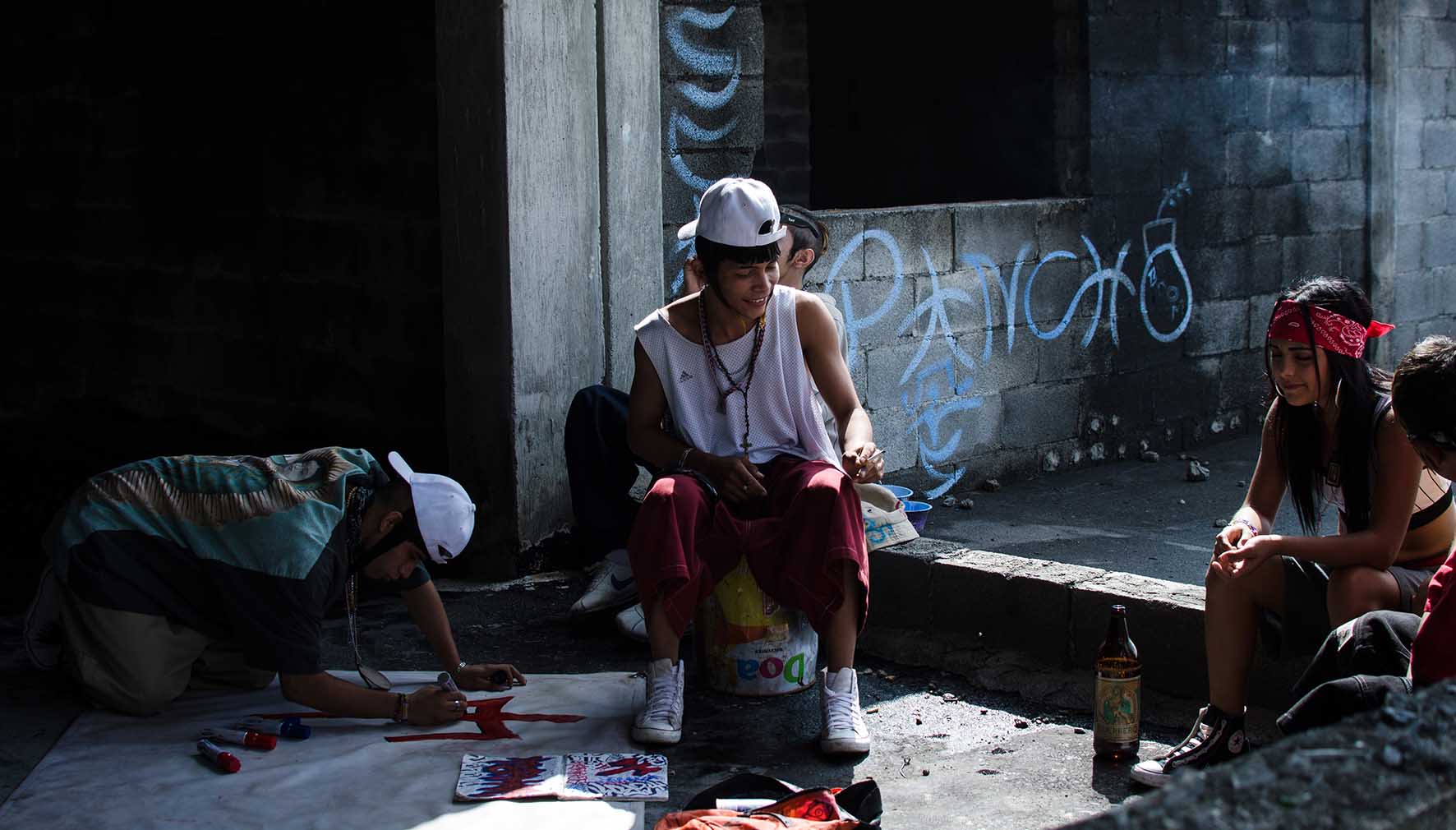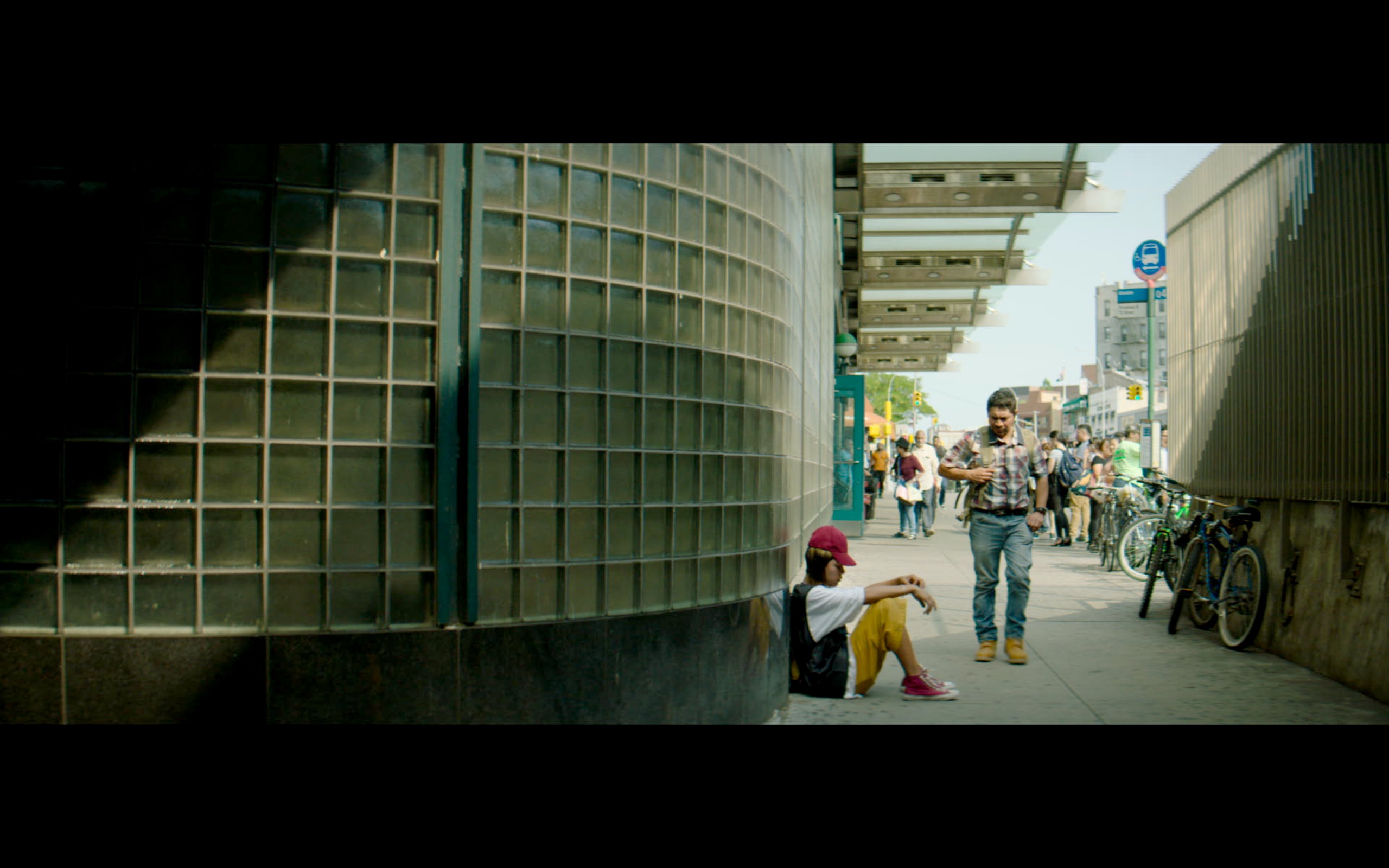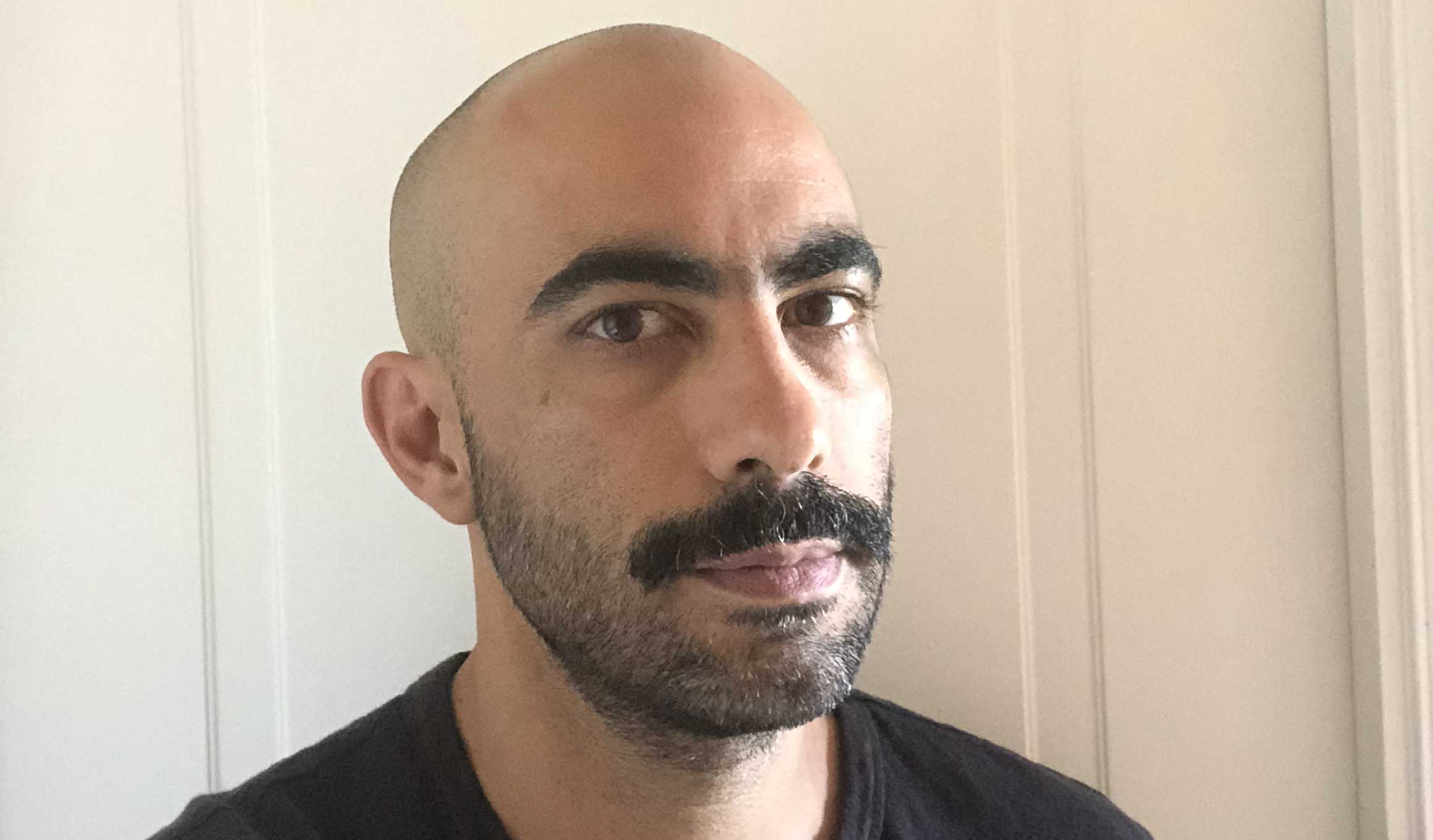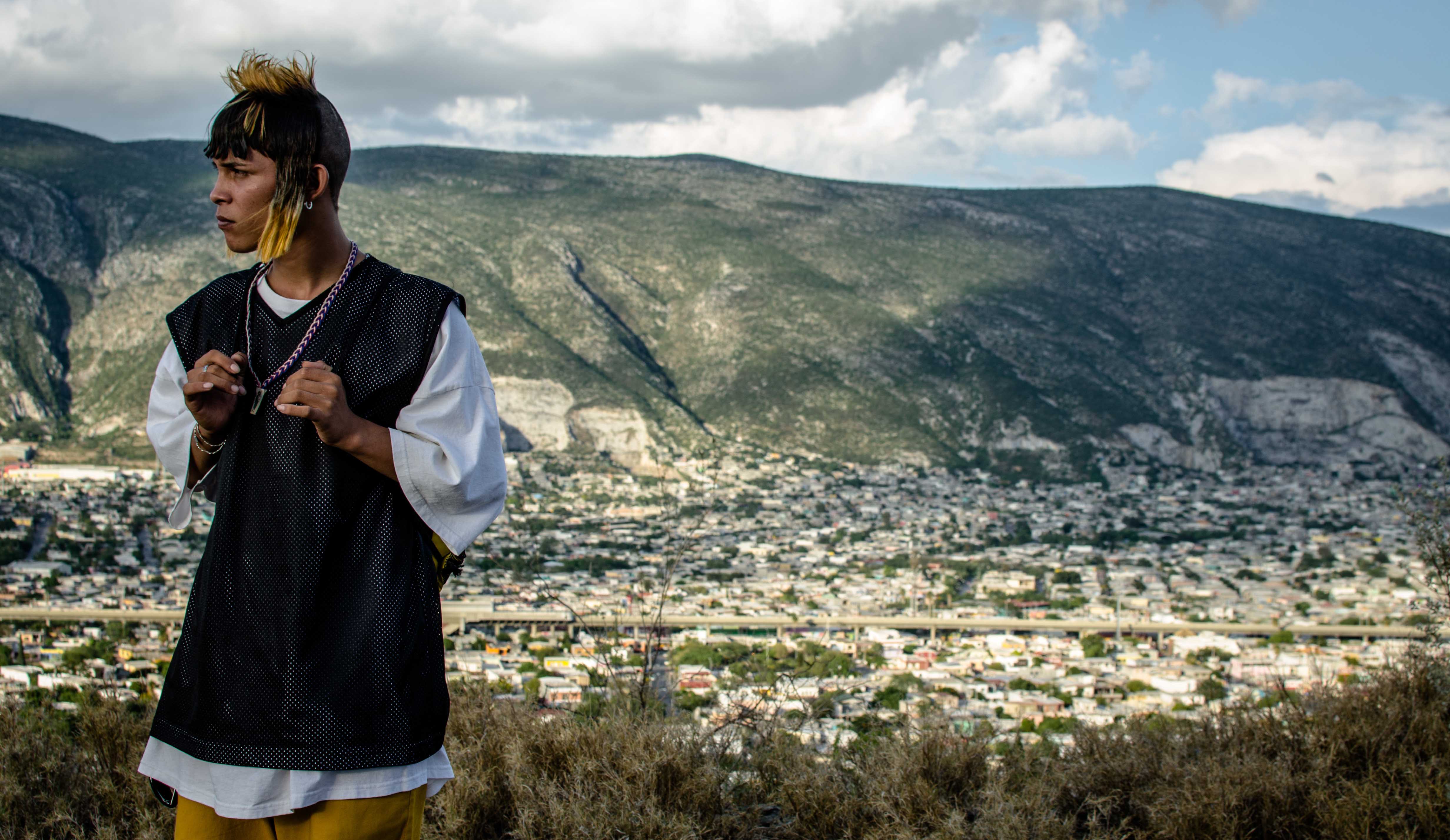Mexico’s Fernando Frias on ‘I’m No Longer Here,’ Globalization, Hybrids
By John Hopewell
LOS ANGELES (Variety.com) – MEXICO CITY — There’s a sense in many Los Cabos Mexican movies this year of a nation living after a fall, yearning for a Eden-like world of childhood or adolescence, facing insoluble problems – the gulf between rich and poor, cartel violence, the need to immigrate – condemned to isolation, nostalgia, always saying ‘goodbye.’ One of the prime examples, and potential highlights of Los Cabos Festival’s Work in Progress: Fernando Frías’ “I’m No Longer Here.”
It delivers a sucker punch: a portrait of an urban tribe, Monterrey’s Cholombianos, dance fanatics with two sheets of straight hair pulled over their cheeks, a bald back of the head, hair piled up in a bun, dressed in bright knee length robes or long shirts and hairbands, who dance to slowed-down Colombian Cumbia arms held high, back bent, circling like a slowly swooping bird of prey.
But just as colonization wiped out much of Latin America’s indigenous populations, gang violence eradicates this urban tribe. Sole survival of a gang attack, Ulises, a 17-year-old Cholombiano is dispatched to New York City, where his looks and dance spark hostility in other immigrants, or are treated by young New Yorkers as the latest fashion fad.
“The film tries to raise questions about how history is written these days where even counter-cultural movements can become another product on supermarket shelves,” Frías has said.
Variety talked to Frías on the eve of this year’s Los Cabos Festival, which kicks off Wednesday Nov. 7.
”I’m No Longer Here” offers an alternative vision of immigration. Would you agree?
If we consider that a lot of the narrative content around Mexican immigration to the U.S. delves into the American dream story and the search for opportunities, I guess so… but migrating has always been natural, and not only in humans of course. And if we consider how things are currently in the world in terms of immigration, unfortunately there are all kind of stories out there… just look at what’s going on with the caravan in Mexico this week.
In Ulises’ odyssey, you plumb an ineradicable sense of cultural identity whose manifestations, however, in New York, are seen as a fashion fad. Do you see this as the fate of an ever more globalized society: the loss of and yearning for cultural roots?
Absolutely. This is a great question. One of the aspects that inspired me to tell this story was the feeling I get after witnessing how the world is becoming the same everywhere you go, and not for the good, sadly. It’s the things that in my opinion shouldn’t be replicated that are the ones that spread the most. As you know, John, it has taken me years to complete this project and one of the side jobs I had throughout this time implied traveling a lot and, after a couple of years, I got really sad and alarmed.
The film uses the full force of cinema – widescreen, long pans, or tracking shots – to document a social reality. That gives the film, in cinematographic terms, much of its tension. Did this style develop as you set out to shoot or was that always your reference?
This was one of the first things I got completely clear about the project and it was never reconsidered. I wanted to stay away from shooting handheld, something that is commonly used in social dramas. And also in this story places are characters and the whole story unfolds around the differences and similitudes between home and the new place, and the emotional impact of these on Ulises.
”I’m No Longer Here” is highly original. On the other hand, the mix of documentary and fiction tropes seems common to a significant number of Mexican and indeed Latin American films. Why is this?
There’s really so much I could say about this in general but I guess each story is its own universe and each story asks for its key elements. So what I am trying to say is that more than the form, what lies behind the popularity of this combination, or this hybrid format -if you’d like- has to do more with the kind of stories been told in the region than with a decision of how to shoot… However there are some more superficial aspects to this of course: Its common to find certain trends. I have seen filmmakers push their casting directors heavily into doing months of street casting only to end up casting big name actors… or the other way around, I have seen stories which, in my opinion, would have worked better – at least for Spanish speaking audiences- if the film was made with professional actors. In the case of “INLH,” it was very clear since the beginning that I needed to work with local people and in the real locations simply because, first of all, the film deals with a now almost completely extinct countercultural movement and the story is framed by the reasons that contributed to the disappearance of such movement. Also I knew I would never be able to recreate those inner and external worlds starting from scratch and it was never my intention to do so.
How did you research the film?
It was a very intense and solitary process. I started by letting some film contacts try to help but soon it was clear that the world I needed to research was not of an easy access to these contacts. So I then befriended taxi drivers and asked them to take me to dance parties and to the neighborhoods where there were cumbia-loving gangs and where these drivers knew people. Then I also used something called fotolog and Facebook to contact some kids directly. I’d talk to them online while watching YouTube videos. The real problem was that as I was writing the script I witnessed how this style started to vanish. This led me to dig deeper to understand the context and the social history of Monterrey better. I have to say that there were three key elements for my research: First, an academic book called “Los Colombias y la cumbia en Monterrey,” published by the UANL, written by Colombian sociologist Dario Blanco Arboleda; then talking and meeting Amanda Watkins who also did a book focusing on the fashion; and finally the casting process along with my friend and casting director Bernardo Velasco…
And cast the actors?
It was a super long process and there’s a long and interesting story behind each character. For the purpose of keeping it brief I’ll focus on Monterrey and the conformation of the fictional gang “Los Terkos.” Basically I had something written but as I started to meet different kids, I responded to their talent and wrote them into the story. This is the case of the “Chaparra” played by Bianca Coral Puente Valenzuela for example. She just decided to do the casting because she accompanied her friend and since the first moment she stood in front of the camera I was blown away so I wrote her character to be Ulises’ best friend. Derek, who played Ulises, had a very difficult time because he was the youngest of the prospects and he worked incredibly hard to get the role. For me, finding him and meeting such an amazing young man is probably one of the most gratifying aspects of having made the film. Casting the actors is probably what I could talk about the most, really.
What will be lacking in the copy screened at Los Cobos as a Work in Progress? When do you aim to have a final version?
A lot. Basically the structure is there but we need to keep editing for a bit and, while Gerry the North American producer of the film is focused on finding funding to finish post, Panorama and I have agreed on looking into how to shoot a couple of scenes that are missing. These are related to the context in which “INLH” takes place. They are key scenes that frame this very particular Ulysses’ odyssey and bring dimension to the story. Also the music is something we still haven’t completely done and that is also a key element. As of when the film will be done, well, that’s also a good question…




